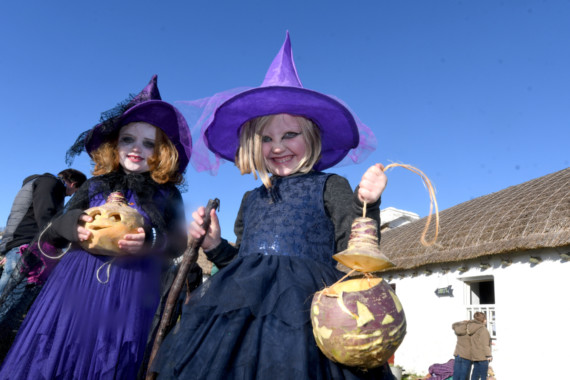Hop tu Naa (pronounced ‘hop choo nay’), or Oie Houney (pronounced ‘ee how-nuh’), is one of the Isle of Man's oldest and most treasured traditions.
Celebrated every year on October 31st, it marks the beginning of winter and has deep roots in the Celtic festival of Sauin (‘sawin’), which signalled the end of the harvest and the transition to the darker half of the year. It is the original Celtic New Year, so a time to reflect and celebrate new beginnings.
It was a time to honour the dead and prepare for colder months, when the boundary between the living and the spirit world was believed to be thinner than usual.
Hop tu Naa has maintained many of its ancient customs, folklore and songs, giving it a special place in the Island’s cultural calendar and amplifying the identity of Manx people.
An iconic symbol of the night is the turnip, more affectionately known as the moot. It is tradition to gut and carve eerie faces into the hardy vegetable, turning them into lanterns and using the ‘innards’ to make stews and soups. Turnip lanterns, with their twisted features, are much more ghoulish than their pumpkin rivals - a nod to the darker, more mysterious origins of the night.

Children go ‘round the houses’ singing the traditional Hop tu Naa song, which differs in each town, in the hope they might receive treats or coins from their neighbours.
A central figure of Hop tu Naa today is Jinny the Witch. Stories about her vary—some say she was a wise woman or healer, while others depict her as a mischievous, even dangerous, witch. Jinny first appeared in songs in 1893, and the rhyme "Jinny the Witch flew over the house to fetch a stick to lather the mouse!" is still sung today.
In earlier times, Hop tu Naa was a night of divination and fortune-telling. Islanders would peel apples in one continuous strip, tossing the peel over their shoulder in hopes that it would land in the shape of their future lover’s initials. Another tradition involved baking special cakes with small tokens inside, representing different fortunes for the coming year.
The Island’s Biosphere designation highlights our commitment to preserving our cultural heritage as well as the natural environment. Hop tu Naa plays an important role in this by helping the community maintain a connection to its past, blending heritage with sustainability, and ensuring that Manx traditions continue to thrive in harmony with our landscape.
Traditions like carving moots are rooted in the Island’s agricultural history, linking people to the land and its resources. Once used to ward off evil spirits, the moot could be seen in modern days as a nod to local traditions and sustainable practices.
For tips on how to have a sustainable Hop tu Naa, see this article.
More information about the customs, songs and traditions of the festival can be found on Culture Vannin's page.
Have a Happy Hop tu Naa!


